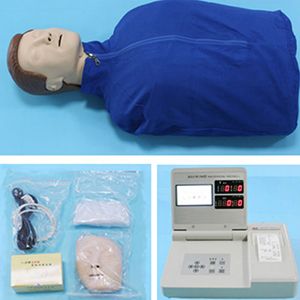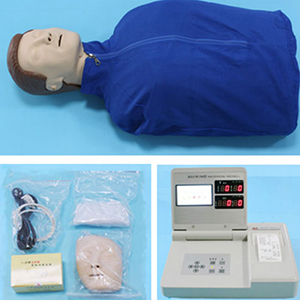ADA MED SUPPLY LIMITED
Phone:+86 19937901373
Tel:+86-0379-65160607
Email:adaanatomy@adaanatomy.com

Article tag: Advanced Half-body cpr simulator Medical first aid model

In the field of medical emergency training, with the continuous progress of technology, advanced half-body cardiopulmonary resuscitation simulator has gradually emerged and become the preferred tool for many medical institutions and training centers. However, there have been different voices and discussions about whether such simulators simplify the training process or enable more precise skills training.
First, on the surface, the advanced half-body CPR simulator seems to be a simplification of the traditional full-body simulator. It no longer pursues a comprehensive simulation of various parts of the human body, but instead focuses on the upper body, specifically the chest area directly related to CPR. This design makes simulators lighter, easier to handle and store, while also reducing costs, making training more affordable for more medical institutions. However, this simplification does not mean that the training effect is reduced or the skills are not fully mastered.

In fact, there has been a significant increase in accuracy. It uses advanced material science and sensing technology to highly simulate the texture, elasticity and feedback of the human chest when pressed. When performing CPR on a simulated human, students can feel compression resistance and chest fluctuation similar to that of real patients, so that they can more accurately grasp the depth, frequency and location of compressions. In addition, the simulator is also equipped with an intelligent evaluation system, which can monitor the students' operation process in real time, and give immediate feedback and suggestions to help students correct mistakes in time and improve their skills.
Therefore, it is not a simple simplified version, but an innovation and upgrade of traditional simulators. While maintaining the training effect, it pays more attention to accuracy and practicality, so that students can master the core skills of cardiopulmonary resuscitation in a shorter time, laying a solid foundation for future combat rescue.
To sum up, the advanced half-body cardiopulmonary resuscitation simulator is neither a simple simplified version nor a complete negation of the traditional simulator. It brings new vitality and opportunities to the field of medical first aid training through the accurate grasp of the training focus and the continuous innovation of technology. In the future development, we have reason to believe that the advanced half-body cardiopulmonary resuscitation simulator will continue to play its unique advantages and contribute to the training of more outstanding medical emergency talents.